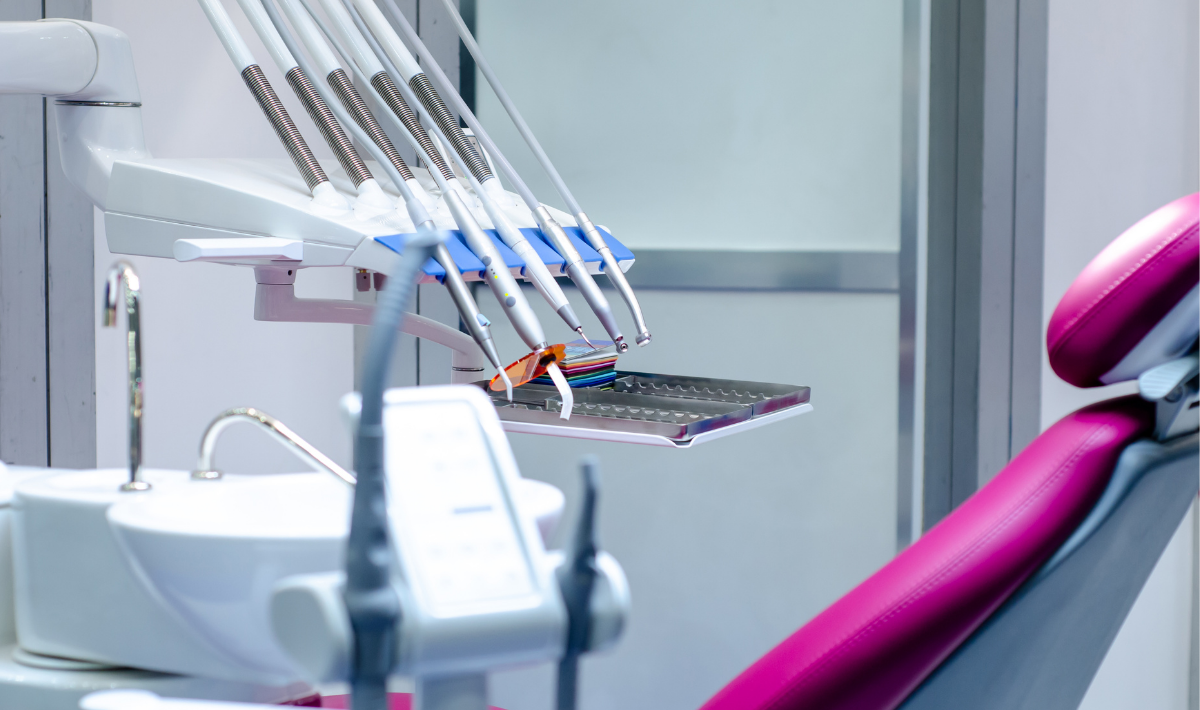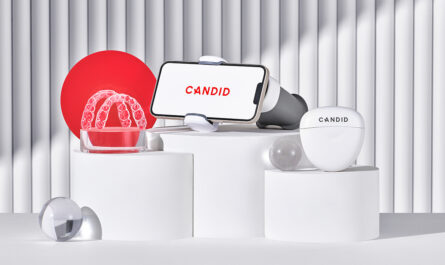After seeing the results in his own practice, one dentist is translating a successful management system made famous among manufacturers into dentistry best practices.
Dr. Sami Bahri, DDS, is always looking for improvement. Since he began practicing dentistry in the 1980s, his practice has been a workshop for developing and implementing process improvements. Through the years, he’s studied every management system available and applied sound dental systems to improve quality of care, reduce cost, generate revenue and increase patient flow.
Yet, for many years, he saw inefficiencies that needed a solution. It was during this time that he studied Lean principles, enormously successful in manufacturing industries. By 2005, Bahri, co-founder of Jacksonville, Fla.-based Bahri Dental Group, was determined to translate Lean principles into success in his dental practice. Though pioneering Lean principles into dentistry came with its challenges, Bahri says the results have transformed his practice, and can make a huge impact in the dental industry overall.
Bahri shared those results in “Follow the Learner: The Role of a Leader in Creating a Lean Culture,” as well as in a DVD: “Single patient flow: applying lean principles in healthcare.” The book won the 2010 Shingo Prize for Research and Professional Publication and the DVD won the same prize for 2013. The Shingo Prize Conference also recognized Bahri as the “World’s First Lean Dentist.” He is a sought-after speaker and lecturer nationally and internationally on implementing Lean management in dentistry.
Efficiency in Group Practice recently spoke with Bahri regarding Lean principles, and how practices can apply Lean for better patient flow and increased revenue.
Efficiency in Group Practice: Can you describe the process that led you to consider implementing Lean principles in your dental practice? Were there any reservations you initially had?
Dr. Sami Bahri: Even after we created sound systems in our practice, assistants and hygienists still waited for me while I struggled to catch up. At the time, their wait didn’t bother me as long as providers were constantly busy. Providers and assistants generate income when busy, but can be costly when idle. We needed to reduce that cost, not only generate income, because we were really managing profit, which is the difference between production and cost. One of the lessons Lean teaches you is cost reduction so you can be profitable at any level of productivity.
But before I learned about Lean, I studied every management system available, trying to find out why despite applying sound dental systems we still had unresolved problems. I studied and applied systems like Total Quality Management, pioneered by Dr. W. Edwards Deming in the 1950s, that was very popular in the United States and Japan; I studied reengineering, pioneered by Michael Hammer; the theory of constraints by Eli Goldratt; I studied Six Sigma as adopted by Motorola and later General Electric; franchising by Michael Gerber; the teachings of Phil Crosby; Tom Peters; Frank and Lillian Gilbreth and many others.
In our hands, only Lean made a big difference at all levels, i.e., profitability, quality, patient experience, stress level, etc.
Did I have reservations? Yes, from the time I started to experiment with Lean principles, right through 2005, when I was finally able to translate them into dental terms. But I began to understand how to translate them into dental terms only in 2005. In the meantime, I was often frustrated to see few tangible results for my considerable efforts. Right before the breakthrough in May 2006, I was tempted to stop Lean altogether, and went back to take a closer look at Six Sigma. But in 2006, the results spoke for themselves, and we opted for the Lean system above any other choice.
Efficiency: How is Lean different than those other management systems and traditional dental management?
Dr. Bahri: I agree, for the most part, that to manage well you need to have systems; a system for scheduling, a system for treatment plan presentation, a system for financial arrangements, hiring, etc. Some people go up to 25-26 systems that you need to have in a dental office. Lean goes a step further.
The way Lean looks at things is totally different; it looks at daily activities as either work or waste. You look at your employees, and you study what they are doing with their time. If you followed every activity of your employees, you’re going to find that some of the activities the patients are willing to pay for. They are called value-added and represent true work. Some of the activities in your practice, you will be paying the employee, but the patient is not willing to pay you for. Those are called non value-adding activities, and represent waste. These include cleaning the rooms, organizing something, or the way you file your insurance, etc.
When Lean experts have studied businesses, they have found that a well-run business spends 20 percent of the time on real work and 80 percent on waste. Reducing waste and transforming it into real work is what Lean does.
Basically, in traditional models, you run your systems exactly as people tell you, but in those systems you have 80 percent waste. Lean teaches you how to remove that waste. For the dentists who think “I have it all, I’m running my systems very efficiently, and if I need to recall my patients I have a perfect recall system…” I’m inviting them to look at their systems and ask “Is that really Lean? Is that really without waste?” If 80 percent is waste, then that gives you a huge opportunity for improvement.
Efficiency: In “Follow the Learner” you say that in some ways a dental practice is similar to a factory. Can you elaborate?
Bahri: When we are making things, it doesn’t matter whether we make cars or crowns; it is all called a process, and the principles of efficiency are the same, with the difference that people and cars experience the passage of time differently. Consequently, we can follow the principles while adapting them to our own situation.
Some might be surprised to know that our current management systems come from the teachings of a brick layer, Frank Gilbreth. In the early 1900s, he established “Time and motion studies” where he filmed and timed workers performing tasks, and improved their performance based on those data. Dentistry, like other industries across the country, embraced the “work simplification” movement that applied “time and motion studies.” A landmark book by Dr. Harold C. Kilpatrick, “Work Simplification in Dental Practice: Applied Time and Motion Studies” was published in 1964.
We see that already then, dentists adopted manufacturing methods to organize our practices. The problem is that manufacturers evolved into a more advanced management system, namely Lean management, based on updated knowledge; but dentistry stayed in the “time and motion studies” era. The results are surprising; manufacturers treat their cars better than we treat our patients. They tend to always start and finish their tasks on time, while attending to the car’s every need, and making sure that no mistakes and no defects go unnoticed.
Can we say the same? Maybe some of us can, but not the profession as a whole. Still, some feel offended to think that their practice is like a manufacturing plant; I wish we had the precision and timeliness of a manufacturing plant, our patients would be much better off.
Efficiency: You describe that your Lean transformation “felt much more like a long trek through a mountain range.” What were some of the lessons learned?
Bahri: That’s in contrast to a linear track where you know what the next step will involve. In our case, we had to figure out the next step after we reached an impasse with the previous step. For example, we wanted to implement “one-patient flow,” adapted from Toyota’s “one-piece flow.” We learned that setup time has to be extremely short to make “one-patient flow” applicable. We worked on that, to find out that we were still sending patients home before a hygiene appointment instead of cleaning their teeth during the restorative treatment.
We studied how to eliminate functional barriers between dentists and hygienists (by combining dental cleanings with restorative appointments), and when we did it, we found that we had communication problems. We created the position of “Treatment Flow Manager,” who would direct resources to where they are needed, when they are needed. As she faced the complications of directing many providers at the same time, we adopted a signal system, called Kanban in the Lean vernacular. My point is that it was a process of discovery, not an easy roadmap. Each path forward was based on what we discovered as barriers in our way “to the next level.”
Efficiency: In 2005 you implemented a new treatment system to alleviate scheduling problems. Can you describe this system?
Bahri: One-patient flow means that once you started working on a patient, you should not stop, or have any delays in treatment between different providers, until their mouth is totally healthy and ready to enter the hygiene recall cycle.
One-patient flow is an ideal state that cannot be reached with every patient for a variety of reasons. If it can’t be reached, why adopt it, then? To answer this question we need to understand how we set goals in Lean management. We set two kinds of goals, the first kind is called “True North” goal, an “ideal state” that provides us with a direction to follow. As long as we follow that direction, we know that our processes are improving.
The second type of goal is a “Target Condition” that creates reachable, concrete steps that move toward True North. For example, being capable of cleaning teeth, and/or treating cavities on the exam day would be a target condition that would lead to one-patient flow.
Efficiency: What were some of the significant improvements that resulted from implementing Lean principles?
Bahri: At the surface, we experienced tangible improvements in cash flow, waiting time, savings in appointment numbers, which I will explain shortly. But at a deeper level, we have created a management system where we can do more with less, in which we know why we succeed, why we fail and how to fix it.
As dentists, we collect data about a tooth before we diagnose its condition, then we prescribe a treatment, we perform the treatment, and we check if it worked; if not, we adjust it and make some changes for the next time we face a similar treatment. That’s exactly what Lean does to management situations; lean practitioners call it the Plan-Do-Check-Act (PDCA) cycle or the scientific method – since we apply it in our daily dental treatments, we found it easy to understand.
Once we have learned how to diagnose wasteful activities and prescribe ways to eliminate them we found ourselves in a very comfortable position where success is not random, but scientifically designed and improved. That makes success more sustainable whether the economy goes up or down, especially since Lean gives us the tools to face most crises.
To go back to the tangible results, cash flow improved immediately. We had taken a loan on the office in 1998, and by mid-2005, we had paid back half of it. Six months after implementing Lean, we paid the whole remaining balance.
The most visible improvement, though, was the waiting time before the appointment. Around noon of every day, we ran so far behind in our operations that patients waited over an hour to be seen. Their wait time went down to around eight minutes – still unacceptable – right after the first phase of implementation. Then it went down again to zero seconds for most of our patients, as a result of continuous improvement efforts, called Kaizen in Japanese.
We have saved around 1,800 appointments – 24 percent of the total number of appointments – in one year while keeping the same amount in production. At the same time we had a 40 percent reduction in the number of assistants, 33 percent reduction in the number of hygienists, and 20 percent in the number of chairs necessary to perform the work.
Efficiency: With all of these process improvements, how also did the patient experience improve as a result?
Bahri: Patients are now able to fit dental appointments predictably in their schedule. They don’t have to reserve a whole morning for a one-hour appointment, because we start on time and finish on time. We could be timely also by having an excessive number of staff and operatories, but we would be spending too much money on the process. Lean thinkers would call it waste, and would challenge us to use fewer resources while improving results.
Patients respect their appointment times as a consequence of our timeliness. Some show up even earlier and in many cases, we take them as soon as they arrive.
We also conducted surveys that showed positive patient satisfaction ratings at every level. We asked questions like “Did you like the idea of treating all your teeth in one appointment?” 96 percent approved. “Would you refer others to us?” 98 percent approved. “Did we fully address your questions?” the approval rate was similar.
Most important, we’re able to get to a healthy mouth ASAP, which prevents recurrence, return visits and allows for easier and more effective care.
Efficiency: One of the challenges you mention in the book is converting the manufacturing terminology inherent in Lean principles into dentistry. How were you able to do that, and then, in turn, communicate that to your staff?
Bahri: We took them one principle at a time, as needed for improvement. But we explored all possibilities, not only lean. We translated Six Sigma principles, Total Quality Management Principles, Reengineering principles as well. It just happened that, in our hands, Lean emerged as the most effective management system. Did we waste our time translating principles belonging to other theories? We didn’t, because Lean is inclusive; it allows you to use any tool from any philosophy to reach the improvement you seek.
How did we communicate with the team? In the morning meeting, I would simply ask a question like: “What do you think one-piece flow” would mean to us? We put no time limit for the answer. We just kept the questions in the back of our minds, and as we went about our work, some random events simply revealed the answer to us. It took us over 13 years to decipher the elements. But don’t think that we lost sleep over the translation; we just let things happen naturally.
As we applied one principle and resolved a set of problems, another set revealed itself, leading us to explore a new principle or tool and translate it. We kept doing it until we translated enough principles to run a comfortably efficient system.
This was all part of an ongoing educational process of us trying to answer the question, “How can we constantly improve our work so that we can deliver patient care that’s faster, more effective and less expensive?”
Efficiency: What role did the staff play in becoming a “Lean” practice?
Bahri: They are the essential piece of the puzzle. Without their active involvement and support, nothing sustainable would have happened. We have developed the system together. They were involved in every detail since the beginning.
At the beginning, all the ideas came from my readings. I would discuss an idea with one team member and try it on a small scale. If it succeeded, we shared it with another interested member. When the idea has gathered enough momentum, we would share it in a meeting with the rest of the group.
As the team matured in the Lean knowledge, we started to share ideas directly in the meetings in order to get everyone involved as soon as possible.
Efficiency: How has using Lean principles made you a better leader?
Bahri: This is the most important aspect of Lean – the people aspect. When thinking of management systems, I used to think exclusively of operations, but the more I learn, the more I’m taken back to basic human relationships and moral values – that’s what leadership is about.
I started my management career as director of the dental school at the Lebanese University in Beirut, Lebanon. I used a “command and control” style of management, where employees were expected to do as I said.
It was different with faculty members; we held long three-hour meetings discussing issues until we exhausted all ideas, then some of us went together to dinner for further discussions. Those discussions were much more successful than the “command and control” style, and led to better interpersonal relationships.
During those meetings, I experienced the benefits of seeking advice. That experience was confirmed by the Lean style of leadership which gave it even more structure. Lean leadership promotes collaboration and learning among all team members – many brains are always smarter than one. Failing to utilize peoples’ intellectual capacity is the biggest organizational waste of all.
Efficiency: When you speak to fellow dentists about Lean principles, what kind of reaction do you get? What are some of the questions they have?
Bahri: One dentist from Ontario summarized the reaction very well: “What I like about your course is that it doesn’t forget that we are above all striving to provide our patients with the best treatment available,” he said. “Unfortunately, when some advocate improving productivity without mentioning how to simultaneously improve treatment quality, they cause us to lose our sense of pride in workmanship – to the contrary; Lean dentistry will boost that sense of pride.”
He based his opinion on the fact that Lean Management improves productivity by improving quality. They seem to go in opposite directions, but, as we and other companies have demonstrated, when you apply Lean principles, productivity and quality go hand in hand. This is actually one of the frequently asked questions: “How do you get quality and productivity to improve at the same time?”
Another topic comes up frequently: “How is it that we can add patients to our schedule, and perform same-day treatments?” “Our schedule is already full,” they say, “How can we add more patients, or treat emergencies if we are already fully booked?”
To answer those questions I usually need a four-hour presentation, after which I usually get a very positive reaction from the audience. But if I don’t get to present in full, people seem curious to know more, and somewhat disappointed that there is not more information available besides my book and video recording. I have been speaking about Lean since 2006; it seems that the time has come for the dental community to embrace the lean philosophy, especially after some major players like the US Army, the US Air Force and Harvard School of Dental Medicine are taking it very seriously.
Sidebar:
Lean view
Lean looks at daily activities as either work or waste. You look at your employees, and you study what they are doing with their time.
Sidebar:
Lean reading: Book and resource recommendations
“Follow the Learner: The Role of a Leader in Creating a Lean Culture,” by Dr. Sami Bahri.
“The Toyota Way to Lean Leadership: Achieving and Sustaining Excellence through Leadership Development,” by Gary Convis and Jeffery Liker.
“Anatomy of a Lean Leader,” by Jerry Bussell.
There is also a DVD in collaboration with the “Greater Boston Manufacturing Partnership” describing our style of leadership: “Single patient flow: applying lean principles in healthcare.”
For those interested in other aspects of Lean, Bahri suggests Lean.org; “the Lean Enterprise Institute editors are very eclectic in their book selections. You could order any book from them and it will hold great value. In Lean Healthcare, Dr. John Toussaint and Mark Graban have written very good books.”
Sidebar:
Approaching Lean implementation
The following are ways group practices can research and approach Lean before implementing, according to Bahri:
“Learn some basics of Lean management so you can start quickly. Although the goal is to acquire profound knowledge, you can experience some profits, and improvement in quality early on.”
“Seek advice, unless you want to take 13 years to see results as I did. A coach can help you see faster results.”
“Start small and run small experiments to implement small changes and learn from them.”
“You are working anyway, why not learn Lean principles and improve at your own pace?”
Sidebar:
Lean results
Waiting times for appointments improved. “Around noon of every day, we ran so far behind in our operations that patients waited over an hour to be seen. Their wait time went down to around eight minutes – still unacceptable – right after the first phase of implementation. Then it went down again to zero seconds for most of our patients.”
“We have saved around 1,800 appointments – 24 percent of the total number of appointments – in one year while keeping the same amount in production.”
“We had a 40 percent reduction in the number of assistants, 33 percent reduction in the number of hygienists, and 20 percent in the number of chairs necessary to perform the work.”
Sidebar:
Lean Definitions in Manufacturing and Dentistry
Cycle Time
Manufacturing: The time required to produce a part or complete a process, as timed by actual measurement.
Dentistry: The time it takes to complete an operation like a dental cleaning, a root canal, or a crown.
Lead Time
Manufacturing: The time it takes one piece to move all the way through a process or a value stream, from start to finish. Envision timing a marked part as it moves from beginning to end.
Dentistry: The time elapsed from the moment a patient calls for an appointment to the moment his or her mouth is totally healthy. “We try to continuously reduce it by eliminating waste/non value-adding activity.”
Takt Time
Manufacturing: The available production time divided by customer demand.
Dentistry: A procedure’s takt time is found by dividing the number of minutes worked during a certain time period by the number of times patients order that procedure (e.g., teeth cleaning or root canal) during that same period.
By comparing takt time to a procedure’s cycle time we could level the schedule and determine the number of people needed to perform the task. For example, because the cycle time needed to perform a dental cleaning (21 minutes) was shorter than its takt time (26 minutes) the process flowed smoothly.
If the cycle time for a cleaning was longer than its takt time, we would have needed more hygienists and more complex scheduling efforts for a timely cleaning delivery.
Source: “Follow the Learner”





